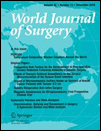Flail Chest: Less Deadly than Originally Thought
Presented poster presentation: Pacific Coast Surgical Association Annual Meeting, 2017.
Abstract
Introduction
Flail chest is considered a highly morbid condition with reported mortality ranging from 10 to 20%. It is often associated with other severe injuries, which may complicate management and interpretation of outcomes. The physiologic impact and prognosis of isolated flail chest injury is poorly defined.
Methods
This is a National Trauma Databank study. All patients from 1/2007 to 12/2014 admitted with flail chest were extracted. Patients with head or abdominal AIS ≥3, dead on arrival, or transferred, were excluded. Primary outcome was mortality; secondary outcomes were need for mechanical ventilation and pneumonia.
Results
Of the 1,047,519 patients with blunt chest injury, 14,718 (1.4%) patients presented with flail chest, and 8098 (0.77%) met inclusion criteria. The most commonly associated intrathoracic injuries were hemothorax (57.9%) and lung contusions (63.0%), while sternal fracture (8.8%) and cardiac contusion (2.5%) were less common. In total, 29.8% of patients required mechanical ventilation, and 11.2% developed pneumonia. Overall mortality was 5.6%. On multivariable analysis, age >65 and need for mechanical ventilation were independent risk factors for mortality (OR 6.02, 3.75, respectively, p < 0.001). Independent predictors for mechanical ventilation included cardiac or pulmonary contusion and sternal fractures (OR 3.78, 2.38, 2.29, respectively, p < 0.001). Need for mechanical ventilation was an independent predictor of pneumonia (OR 13.18, p < 0.001).
Conclusions
Mortality in isolated flail chest is much lower than previously reported. Fewer than 30% of patients require mechanical ventilation. Need for mechanical ventilation, however, is independently associated with mortality and pneumonia. Age >65 is an independent risk factor for adverse outcomes, and these patients may benefit by more aggressive monitoring and treatment.




